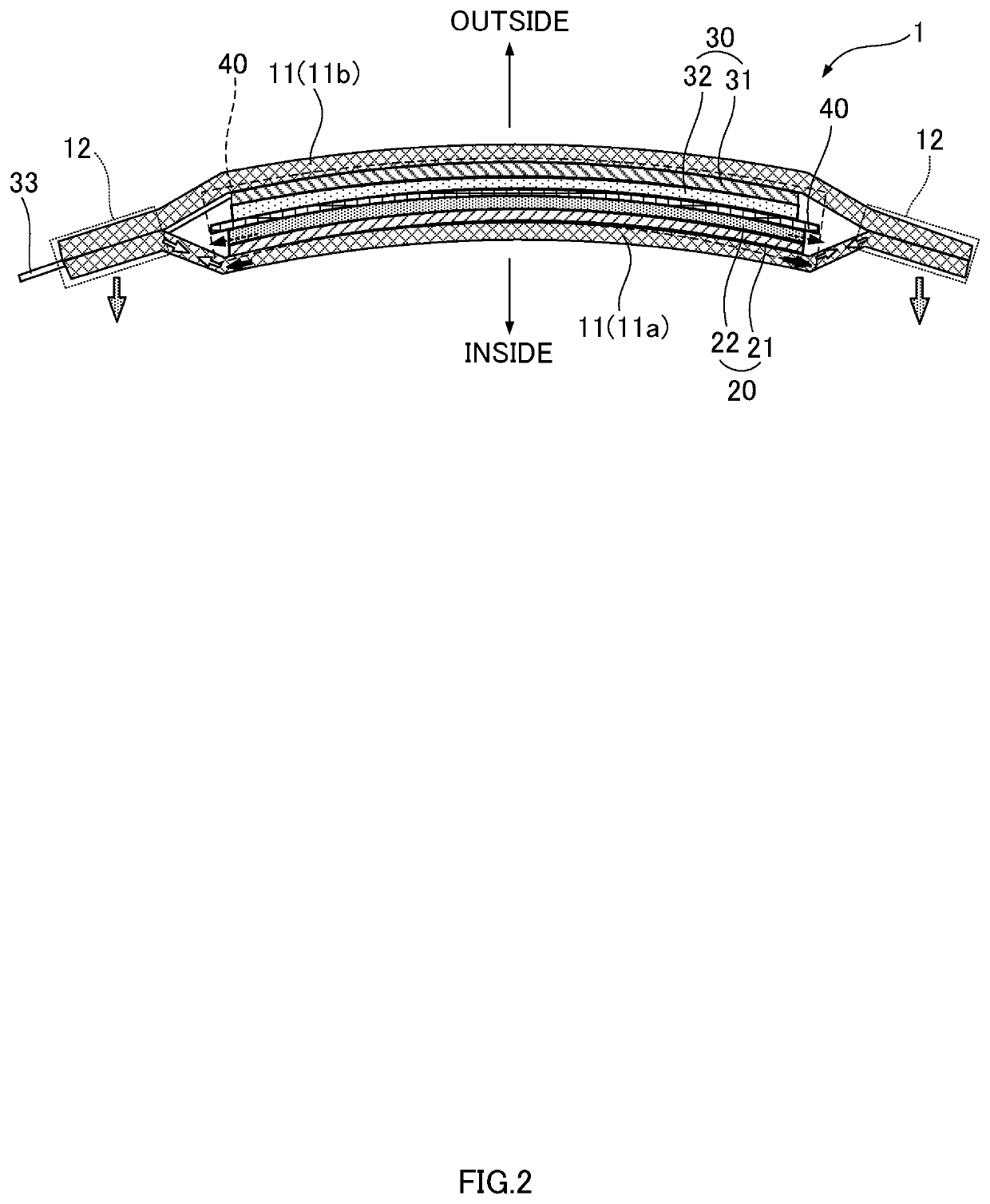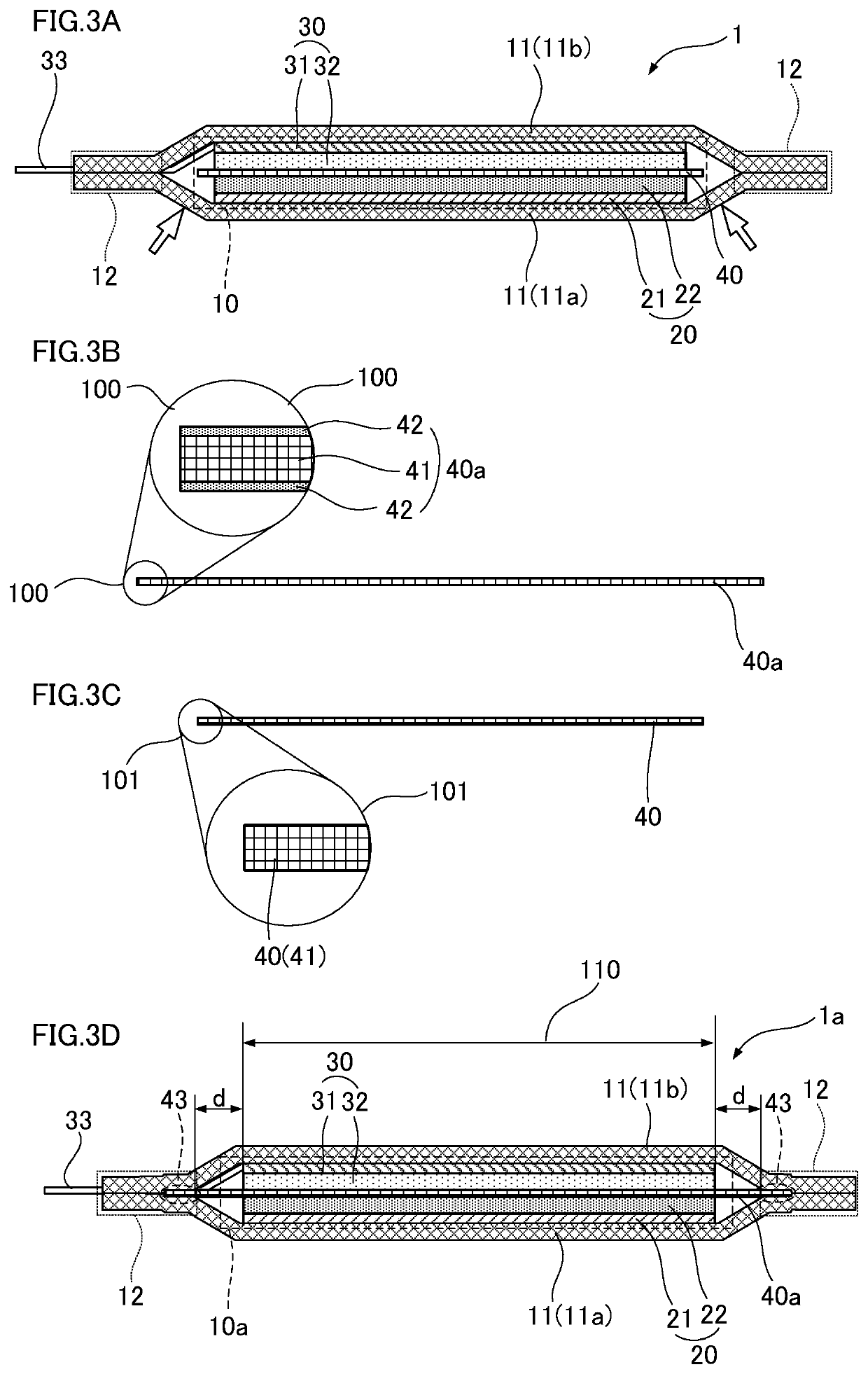Laminate-type power storage element
a power storage element and laminate-type technology, applied in sustainable manufacturing/processing, non-aqueous electrolyte cells, batteries, etc., can solve problems such as liquid leakage, data reading and writing errors, etc., to reduce the electrical performance of laminate-type power storage elements, increase manufacturing costs, and tighten the permissible range of alignment errors
- Summary
- Abstract
- Description
- Claims
- Application Information
AI Technical Summary
Benefits of technology
Problems solved by technology
Method used
Image
Examples
embodiments
[0032]FIG. 3D illustrates the internal structure of a laminate-type power storage element 1a according to an embodiment of the present disclosure. In contrast, FIG. 3A is a cross-section illustrating the internal structure of the laminate-type power storage element 1 illustrated in FIG. 1. FIG. 3B is a cross-section illustrating a separator 40a employed in the laminate-type power storage element 1a according to an embodiment of the present disclosure. Similarly, FIG. 3C is a cross-section illustrating a structure of the separator 40 employed in the laminate-type power storage element 1.
[0033]As illustrated in FIG. 3D, the laminate-type power storage element 1a according to an embodiment of the present disclosure includes an electrode body 10a configured by a sheet-shaped positive electrode 20 and a sheet-shaped negative electrode 30 stacked on either side of the separator 40a. The electrode body 10a is encapsulated inside an exterior body 11, together with an electrolyte.
[0034]The e...
PUM
| Property | Measurement | Unit |
|---|---|---|
| thickness | aaaaa | aaaaa |
| temperature | aaaaa | aaaaa |
| melting point | aaaaa | aaaaa |
Abstract
Description
Claims
Application Information
 Login to View More
Login to View More - R&D
- Intellectual Property
- Life Sciences
- Materials
- Tech Scout
- Unparalleled Data Quality
- Higher Quality Content
- 60% Fewer Hallucinations
Browse by: Latest US Patents, China's latest patents, Technical Efficacy Thesaurus, Application Domain, Technology Topic, Popular Technical Reports.
© 2025 PatSnap. All rights reserved.Legal|Privacy policy|Modern Slavery Act Transparency Statement|Sitemap|About US| Contact US: help@patsnap.com



